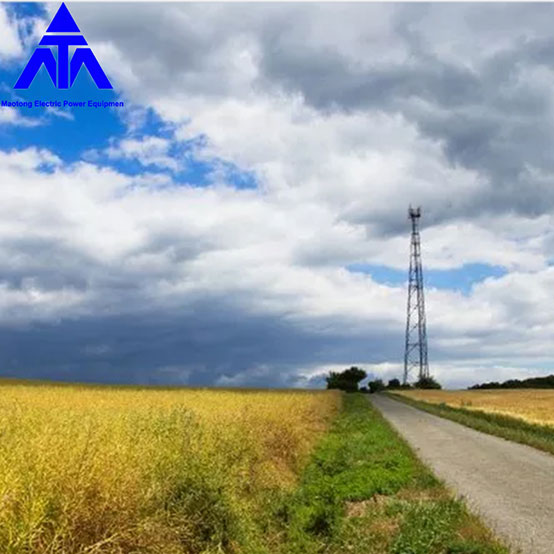Preserving Connectivity: The Role of Corrosion Protection Methods in Extending the Service Life of High-Density Telecommunication Tower Steel Pipes
2024-02-20
In the challenging environments of coastal regions and industrial areas, where corrosive elements abound, the longevity and reliability of telecommunications infrastructure are put to the test. High-density telecommunication tower steel pipes, essential components of network deployments, are susceptible to corrosion over time, which can compromise their structural integrity and performance. Galvanization and other corrosion protection methods play a pivotal role in safeguarding these steel pipes and extending their service life in harsh environments. Let's explore the significance of corrosion protection methods in preserving the connectivity and resilience of telecommunications infrastructure.
Understanding Corrosion in Harsh Environments
Coastal regions and industrial areas pose unique challenges for telecommunications infrastructure due to exposure to saltwater, humidity, airborne pollutants, and other corrosive elements. Corrosion occurs when steel surfaces react with oxygen and moisture in the air, forming rust or oxide layers that weaken the metal and lead to degradation over time. In coastal environments, saltwater exacerbates corrosion, while industrial pollutants accelerate deterioration, making corrosion protection essential for high-density telecommunication tower steel pipes deployed in these areas.
Galvanization: A Robust Corrosion Protection Method
Galvanization is a widely used corrosion protection method that involves coating steel surfaces with a layer of zinc to create a barrier against corrosive elements. The galvanization process forms a durable zinc coating through either hot-dip galvanization or electroplating, depending on the application requirements. Hot-dip galvanization involves immersing steel pipes in molten zinc, while electroplating applies a zinc coating using an electrical current. Both methods provide effective corrosion protection by sacrificially corroding to protect the underlying steel from rust and degradation.
Benefits of Galvanization for High-Density Telecommunication Tower Steel Pipes
Galvanization offers several benefits for high-density telecommunication tower steel pipes deployed in coastal or industrial environments:
1. Enhanced Corrosion Resistance: The zinc coating acts as a sacrificial barrier, corroding preferentially to protect the underlying steel from rust and deterioration caused by saltwater, humidity, and pollutants.
2. Longevity and Durability: Galvanized steel pipes have an extended service life compared to untreated steel, withstanding the rigors of harsh environments and reducing the frequency of maintenance and replacements.
3. Cost-Effectiveness: While galvanization involves an upfront investment, the long-term cost savings associated with extended service life and reduced maintenance outweigh the initial expenses, making it a cost-effective corrosion protection method.
Other Corrosion Protection Methods
In addition to galvanization, other corrosion protection methods may be employed to extend the service life of high-density telecommunication tower steel pipes:
1. Coatings and Paints: Epoxy coatings, polyurethane paints, and other protective coatings provide an additional layer of defense against corrosion, enhancing the durability and longevity of steel pipes in corrosive environments.
2. Cathodic Protection: Cathodic protection systems, such as impressed current or sacrificial anodes, can be installed to prevent corrosion by inducing a protective electrical current that inhibits the oxidation of steel surfaces.
Conclusion
Corrosion protection methods, such as galvanization and coatings, play a critical role in extending the service life of high-density telecommunication tower steel pipes deployed in coastal or industrial environments. By providing a barrier against corrosive elements and sacrificially corroding to protect the underlying steel, these methods safeguard telecommunications infrastructure and ensure the reliability and resilience of network deployments. Investing in corrosion protection measures not only preserves connectivity but also minimizes maintenance costs and enhances the long-term value of telecommunications infrastructure in the face of harsh environmental challenges.



